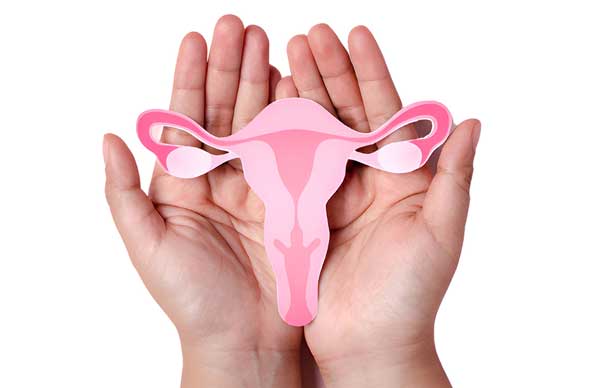The Role of FODMAPs in Managing Digestive Disorders

Digestive disorders can make your life miserable. Many times people suffer from digestive disorders for years and fail to find the real reason. Now, finding the real or the root reason for any health issue is most important because only after that the healthcare professional will be able to provide the right medical support.
Although, every individual can have digestive issues due to different reasons, however, FODMAPs can play an important role. So, in this blog, we will inform you about the role of FODMAPs in managing digestive issues. Read this blog to increase awareness and connect with NeotiaGetwel Multispecialty Hospital for 24*7 emergency care& the best medical support.
1. What are FODMAPs?
FODMAP stands for Fermentable Oligo-, Di-, Mono-saccharides and Polyols. These are the scientific terms of the group of carbs that can be responsible for digestive issues for some people. Mainly, FODMAPs have short chains of sugar that don't get absorbed by the body.
1.1. Here are the main groups of FODMAPs:
a. Oligosaccharides: The carbs which belong to the oligosaccharides group include fructans (fructo-oligosaccarides and inulin) and galacto-oligosaccharides. Key dietary sources include wheat, rye, various fruits and vegetables, pulses and legumes.
b. Disaccharides: Lactose is the main component in this FODMAP group. Key dietary sources include milk, yoghurt and soft cheese.
c. Monosaccharides: Fructose is the main FODMAP in this group. Key dietary sources include various fruits, honey and agave nectar.
d. Polyols: Carbs in this group include sorbitol, mannitol and xylitol. Key dietary sources include various fruits and vegetables, as well as some sweeteners like those in sugar-free gum.
2. How do the FODMAPs create gut problems?
There are 2 ways by which they can create a gut problem for you. The ways are:
a. Increasing fluid into the intestine: Because FODMAPs are short chains of sugars, they are “osmotically active.” So, they can draw fluid from the body to the intestine. Due to this, the patient faces issues such as bloating and diarrhoea. For example, when you eat the FODMAP fructose, it draws twice as much water into your intestine as glucose, which is not a FODMAP.
b. Fermentation of bacteria: When we consume carbs, they need to be broken down into singular sugars to get absorbed by our body. However, when we consume carbs belonging to the FODMAP family, we need some specific enzymes to break those down, which our body does not produce. So, naturally, our body fails to digest or absorb that, and it remains undigested, and it reaches the large intestine, or colon travelling through the small intestine.
Our intestine is the home of trillions of bacteria and when the undigested FODMAP reaches there, these bacteria rapidly ferment FODMAPs, releasing gas and other chemicals that can cause digestive symptoms, such as bloating, stomach pain and altered bowel habits in sensitive people. Research has already shown that when we consume FODMAP inulin, it produces 70% more gas in the large intestine than glucose.
However, it is important to mention that not everyone is sensitive towards FODMAP. So, you need advice from a reputed medical practitioner to get confirmed on this.
3. What FODMAPs do?
When the sugars from FODMAP remain undigested in our tract, it creates a lot of discomfort. Some of them are:
- Bloating
- Gas
- Abdominal pain
- Constipation
- Watery diarrhoea
However, it is important to mention that, you are not going to face this discomfort right after taking the food. There are the highest chances that you would start feeling these discomforts after 30 minutes of taking the food because in between this, the FODMAPs gather the extra water in the intestine and create gas & the abdomen will start swelling as well.
4. What are some FODMAP foods?
Although you should take advice from a reputed medical practitioner on this, however, here we can provide you with a list of FODMAP foods and their alternatives as well.
| Avoid these | Opt for these |
|---|---|
| Apples | Blueberries |
| Peaches | Carrots |
| Wheat | Brown rice |
| Ice creams | Oats |
| Milk | Chicken |
| Kidney beans | Eggs |
| Honey | Mozzarella |
4.1. Some more low-FODMAP foods are:
- Eggs and meat
- Certain cheeses such as brie, Camembert, cheddar and feta
- Almond milk
- Grains like rice, quinoa and oats
- Vegetables like eggplant, potatoes, tomatoes, cucumbers and zucchini
- Fruits such as grapes, oranges, strawberries, blueberries and pineapple
5. How does the low FODMAP work?
A low FODMAP diet consists of three steps.
In the first step, the doctor suggests the patient take high-FODMAP foods.
In the second step, the doctor again slowly reintroduces the foods to identify the main culprit.
Once the main culprit is identified, now the patient can cut off that specific food or limit the consumption.
Some common FAQs:
Is the low FODMAP diet, a gluten-free diet?
Well, typically, it does not need to be a gluten-free diet. However, the diet must on low on glutton. In the low-FODMAP diet, wheat must be cut off or reduced because wheat has a high amount of fructans in it. However, a low-FODMAP diet is not a gluten-free diet because foods such as sourdough spelt bread, which contains gluten, are allowed in the diet.
Do I need to quit all dairy products in the low FODMAP diet?
Lactose is found in FODMAP. However, there are options in low-FODMAP dairy foods such as hard and aged cheeses, crème fraîche and sour cream.
How can I know what foods I need to avoid if I am FODMAP sensitive?
Well, it is not like an allergy. So, you don’t need to avoid all the foods with FODMAP. Some of them are highly beneficial for the gut health. So, it is important to consult with a doctor and he/she will provide you with the right diet.
Final words: We hope that this blog has helped you to have an idea about the FODMAP and what you are supposed to do. Do not ignore it because your gut health has a high impact on the rest of the body. Connect with NeotiaGetwel Multispecialty Hospital for 24*7 emergency care& the best medical support.
Disclaimer
Though all attempts are made to provide correct information on the subject, inadvertent & typographical errors arising out of manual intervention cannot be ruled out. It is requested to bring any such discrepancies to the notice of the blogger for correction.













